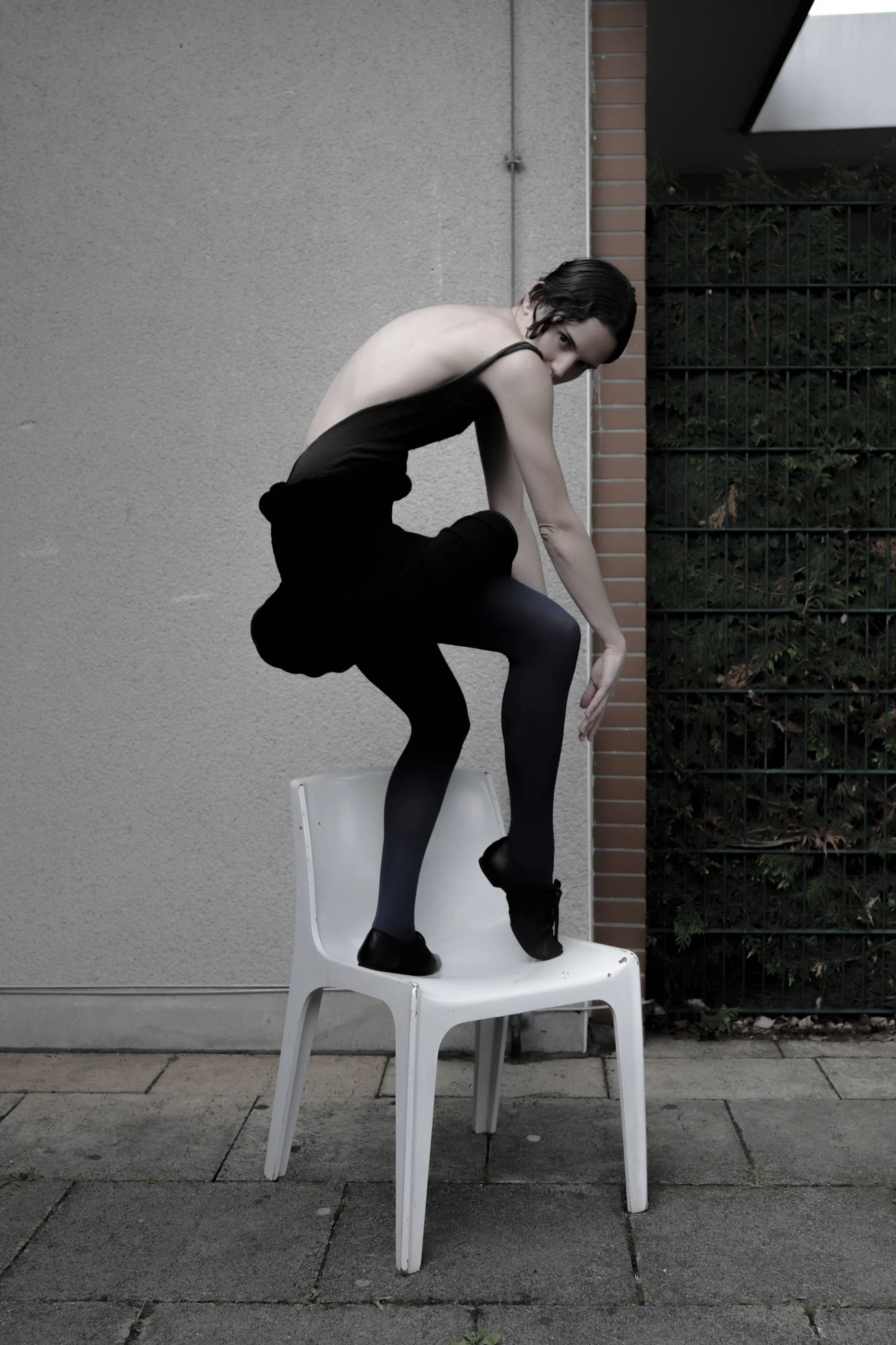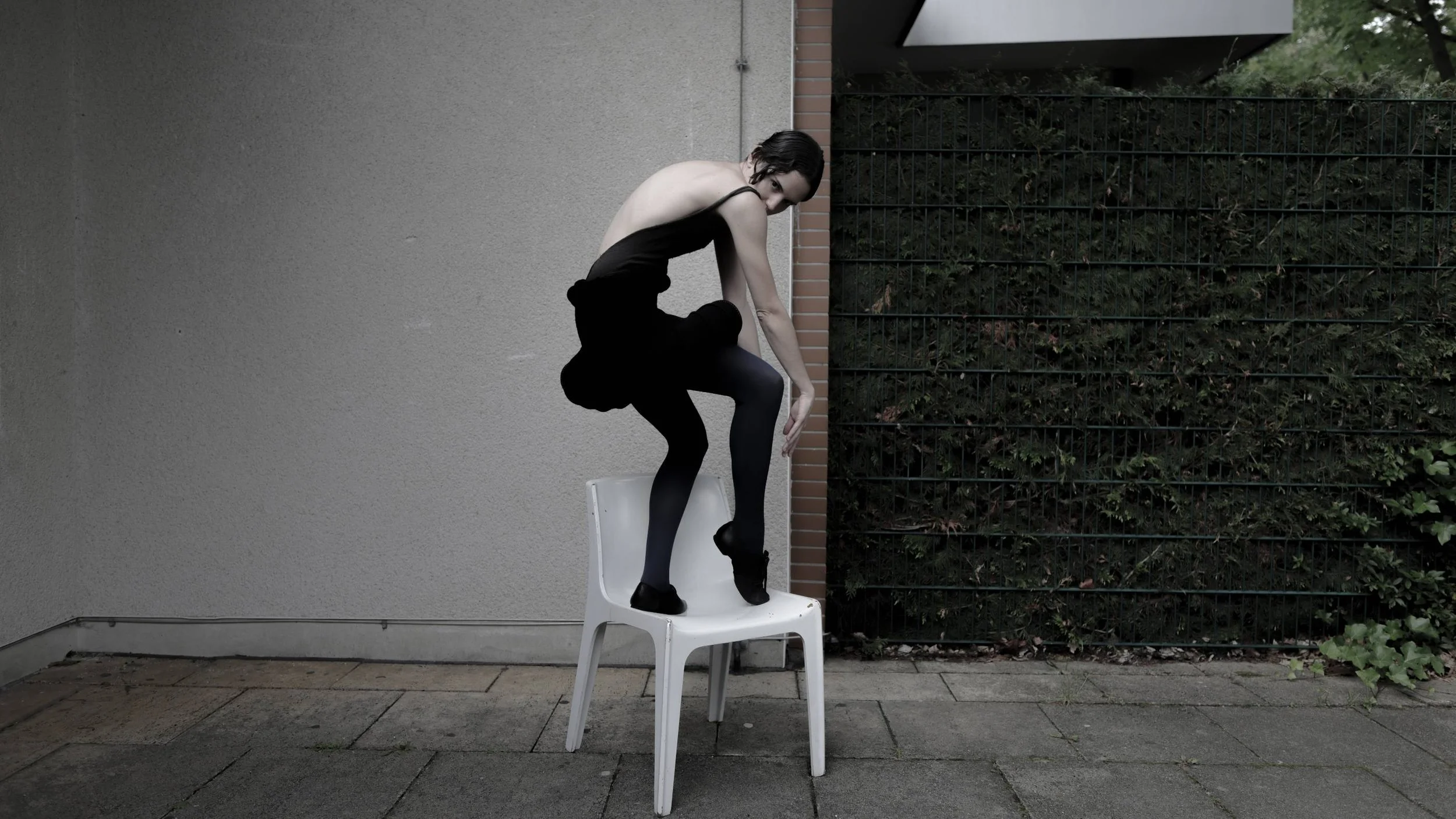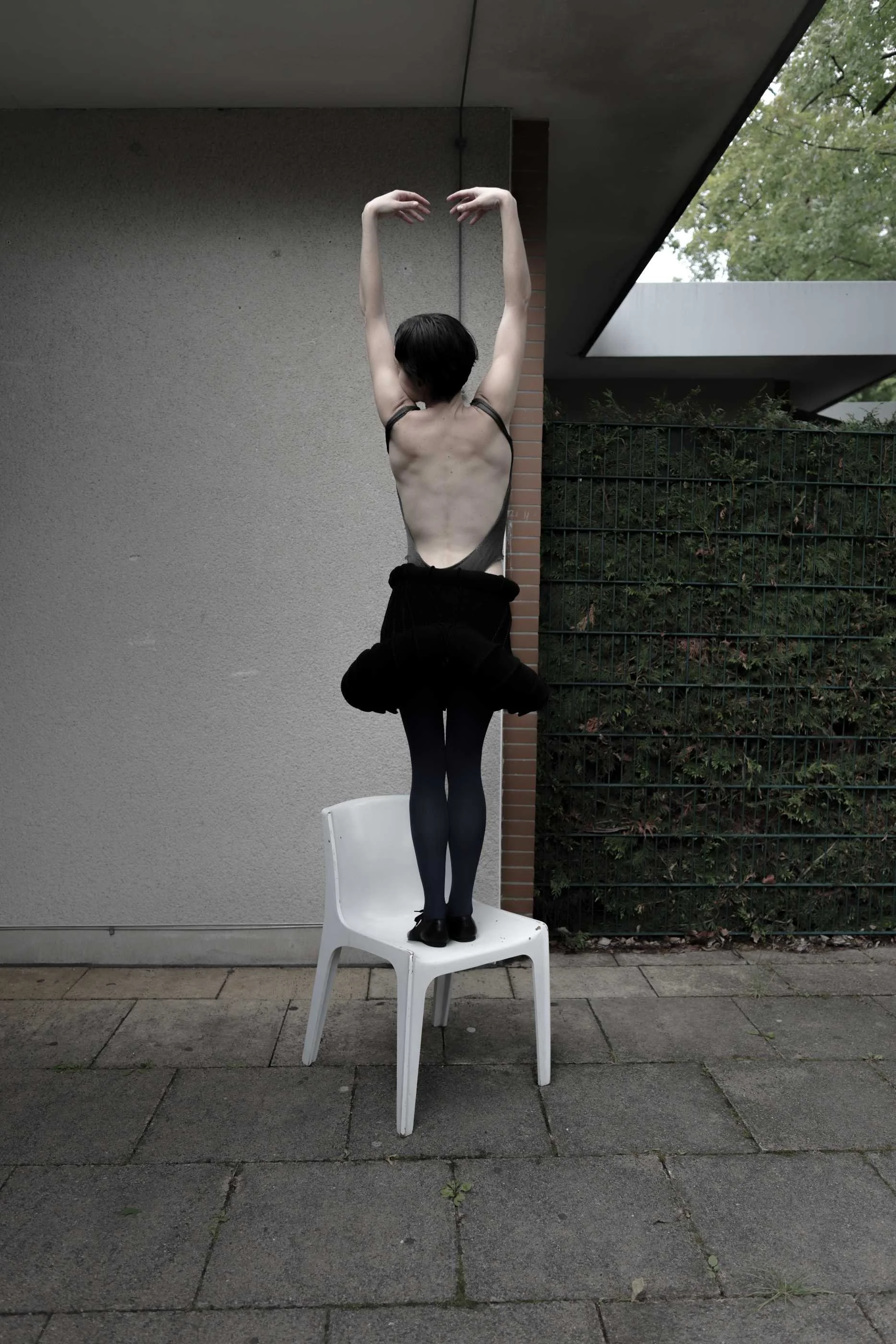Elena Francalanci
Elena Francalanci moves between different environments, both physical and cultural, industrial towns and ballet studios, pop culture and somatic intimacy, rigor and improvisation. Rooted in a tactile sense of presence, her performances dissolve the partition between choreography and personal ritual. In this conversation, the Tuscan-born artist talks about bodies in motion, the influence of shoemaking and dance, and how she navigates performance not through meaning but through image, connection, and contradiction.
Your work often reflects a blend of personal experience and broader cultural themes. How do you navigate the intersection between autobiographical influences and the universal messages you aim to convey through your performances?
It’s funny you mention “messages”, I don't really like to give messages or meanings, I mostly work with images and the way they intersect. The themes of my performances are the core of my practice: I’m interested in the body and how it moves through different spaces, how it interacts with other bodies and how pop culture and different factors shaped it.
I’m a big fan of reinventing the idea of what “pop” is, and disconnecting actions from their spaces, playing with clichés and drama, and always trying to deconstruct them through a female perspective. It’s hard, you know, being surrounded by men and their power. :)
My everyday life really influences the form of representation and the development of a piece. I love to work with people I meet, getting inspired by them - sometimes even involving these people in the process of creation, letting that connection guide what the performance will actually explore.
Growing up in Tuscany within a family of shoemakers, you’ve mentioned the contrast between the tactile nature of leatherwork and the disciplined world of ballet. How has this duality shaped your approach to choreography and performance art?
Both are a huge part of me and my work. Ballet and modern dance are at the foundation of all my performances, and growing up surrounded by shoes made me dream of becoming a designer. But behind both worlds, dance and the shoe factory, there’s the same essence of being passionate and fully giving yourself to it. Watching my father designing and making these shoes with so much dedication somehow taught me how to approach life. I know ballet doesn’t always look that way from the outside, it’s seen as something ethereal, with ballerinas smiling and floating across the stage, but it is quite real and rough on the body, very similar to leather work and living surrounded by industries.
Also I love that you used the word “tactile”. I’m very interested in touch, and the somatic connection between bodies, but also in how bodies influence and shape space even without physical contact, through composition and presence.
You’ve expressed a desire to challenge traditional aesthetics by juxtaposing classical beauty with raw, unrefined elements. How does this contrast manifest in your performances, and what do you hope audiences take away from it?
In general, I’m always searching for contrasting elements that twist something in the viewer. Growing up between classical ballet and an industrial town defined my attraction to both refinement and rawness.
You can see it in the way I perform. My movements are shaped by forms and structures, but I never fully polish or over-compose them. I like to leave space for the undefined and that’s why I like improvising on stage.
I also like working site-specific, really opening up and unveiling the spaces I perform in. I know it might sound cheesy, but it’s about not hiding, about literally opening the lights on the space. And yes of course, I am a huge fan of aesthetics, of something visually “beautiful” even if I think my nature is actually more drawn to contrast and friction.
Improvisation plays a significant role in your creative process, yet you also emphasize the importance of structure. How do you balance these aspects to ensure each performance remains both spontaneous and cohesive?
It’s not easy. You have to know when to stop rehearsing a scene if you want to keep it alive and improvised. For example, with *La Petite Mort 2* Andrea Bambini and I created a pop song through which I realized how important rehearsing is, especially when it comes to voice. I don’t like to over-rehearse movements and to fix too much of the choreographic score. Maybe I am just traumatized by crazy choreographers. On the other hand when I work with other performers, it’s important to agree on a structure, on which kind of feeling and how we want to approach each scene.
How do you see performance today? Where do you see it headed?
It’s hard to say, because each reality is different. But what I really like is seeing more and more intersection between music and performance art, how these two worlds inspire each other. I hope the future moves less toward overly conceptual work and more toward the body, the guts, something real and tangible. Less “in the air” and more rooted in actual life, in something you can really grab. Especially in times like these, I think it’s important to reconnect to realness.
Photography by JOSHUA EZECHIEL
Clothing by LINA NIX
Interview by DAVIDE ANDREATTA
What to read next

















